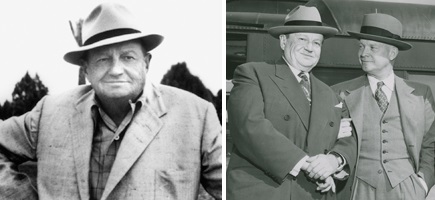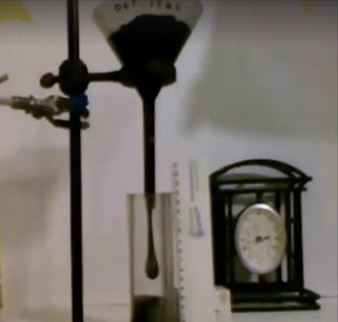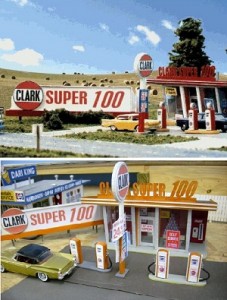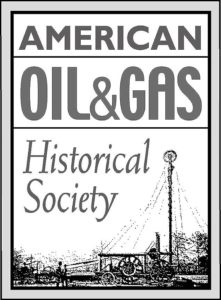This Week in Petroleum History: July 7 – 13
July 7, 1919 – Start of First Transcontinental Motor Convoy –
Beginning with the dedication of a “Zero Milestone” marker on the Ellipse south of the White House, a convoy of U.S. Army military vehicles began a cross-country trek to San Francisco. Lt. Col. Dwight Eisenhower participated as an observer for the War Department during the “truck train,” which traveled to Gettysburg to connect to the Lincoln Highway, the first auto road across the United States — but not completely paved until 1935.
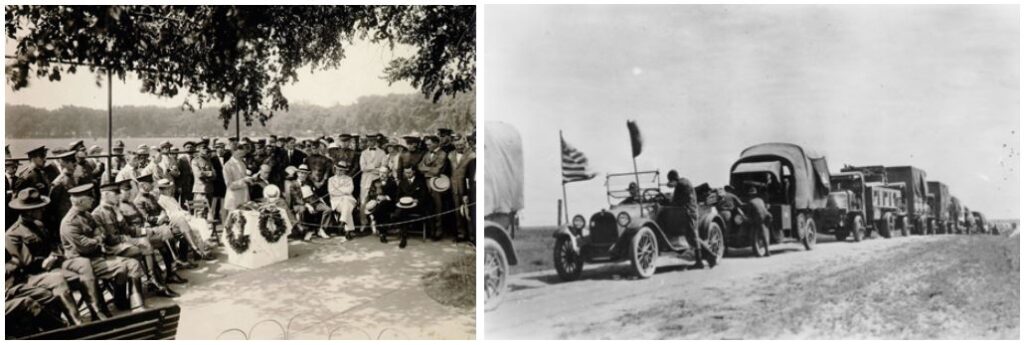
The July 7, 1919, dedication of a “Zero Milestone” on the Ellipse south of the White House preceded the Army’s first attempt to send a convoy of military vehicles across the country. Photos courtesy Dwight D. Eisenhower Presidential Library.
The convoy’s 81 motorized vehicles took 62 days to travel 3,251 miles. It included five ambulances, four kitchens, a truck-mounted blacksmith shop, two machine shops, and a trailer hauling an artillery tractor. Firestone Tire and Rubber Company provided two trucks filled with spare tires.
According to the Dwight D. Eisenhower Presidential Library, “Lt. Col. Eisenhower learned firsthand of the difficulties faced in traveling great distances on roads that were impassable and resulted in frequent breakdowns of the military vehicles. These early experiences influenced his later decisions concerning the building of the interstate highway system during his presidential administration.”
July 7, 1935 — Oil Boom comes to Rodessa, Louisiana
Although natural gas had been discovered near Rodessa, Louisiana, five years earlier, an oil well completed by United Gas Public Service Company brought a drilling boom to the Caddo Parish community. The well produced 8,000 barrels of oil a day from a depth of 6,048 feet.
“Tents and cots dotted the area, even in the cemetery,” notes a Rodessa historical marker. “Shotgun houses of tin and corrugated iron sprang up everywhere. By the spring of 1936, more than 100 rigs were running in the field.” But production from the Rodessa oilfield, which by 1937 extended into two Texas counties, declined by the early 1940s. The discovery well was plugged after eight years of production, ending the community’s reign as an oil boom town.
July 7, 1947 – Sid Richardson establishes Foundation
Independent producer and Western art collector Sid Williams Richardson (1891-1959) established the Sid Richardson Foundation to benefit Texas hospitals, schools, and colleges.
One of the wealthiest men in the nation, Richardson had made oil discoveries as early as 1919, but struggled in the exploration and production industry until 1933. The lifelong Texas resident’s partnerships later included the Richardson and Bass Oil Producers Company of Fort Worth. “Mr. Sid” also became a leading collector of paintings by Frederic Remington and Charles Russell, many on display in Fort Worth’s Sid Richardson Museum.
July 8, 1848 – Congress charters Gas Light Company
Four days after the laying of the Washington Monument cornerstone, an Act of Congress established the Washington Gas Light Company, which manufactured “town gas” for lighting and heat. The new utility constructed giant tanks (gasometers) on 6.5 acres of gasworks in the D.C. neighborhood of Foggy Bottom.

Washington Monument view of manufactured gas works and gasometer tank at Foggy Bottom in Northwest D.C. Photo courtesy Washington Gas Light Company, operating 175 years in 2023.
The public clamored for gas lighting like that already available in Baltimore and Philadelphia (see Illuminating Gaslight), and after multiple unsuccessful petitions to Congress, the utility received its charter, according to local historian Kent Mountford. George Riggs and William Corcoran played significant roles in the company, which supplied the Capitol building with illuminating gas.
Natural gas service to the D.C. region began in 1931 when President Herbert Hoover opened a pipeline valve to start the flow from natural gas fields in Kentucky and West Virginia. WGL celebrated its 175th anniversary in 2023.
July 8, 1937 – War Secretary approves Drilling Pier Experiment
Secretary of War Harry Woodring approved an ambitious engineering plan to build a Gulf of Mexico pier one mile long to search for oilfields in offshore salt dome formations. Woodring approved exploratory wells by the Humble Oil and Refining Company near McFaddin Beach at Port Author, Texas. The company built an experimental pier on a 60-acre lease eight miles east of High Island in Galveston County and drilled using three rigs, but found no oil. A hurricane destroyed the pier in 1938.
July 9, 1815 – West Virginia Natural Gas Discovery
Natural gas was discovered accidentally by Capt. James Wilson while digging a brine well within the present city limits of Charleston, West Virginia (Virginia in 1815). Earlier, a young surveyor — George Washington — had written about “burning springs” and petroleum seeps northward, along the Kanawha River.
Awarded a land grant for his service in the French and Indian War, Washington acquired 250 acres along the river. He later explained choosing the location, “on account of a bituminous spring which it contains, of so inflammable a nature that it burns as freely as spirits.”
In his 1994 history of West Virginia’s oil industry, David L. McKain concluded, “This was in 1771, making the father of our country the first petroleum industry speculator.”
July 9, 1883 – Finding Oil in the Land of Oz
The future author of the children’s novel The Wonderful Wizard of Oz operated a business selling petroleum products in Syracuse, New York. The store offered lubricants, oils, greases — and “Baum’s Castorine, the Great Axle Oil.”

L. Frank Baum’s many “Castorine” oil sales trips may have led to his idea of a Tin Woodman character with an oil can.
L. Frank Baum — whose father had found success in Pennsylvania oilfields — served as chief salesman for Baum’s Castorine Company, which operates today in Rome, New York. Reporting on the opening, the Syracuse Daily Courier newspaper said Baum’s Castorine was a rust-resistant axle grease concoction for machinery, buggies, and wagons. The axle grease was advertised to be “so smooth it makes the horses laugh.”
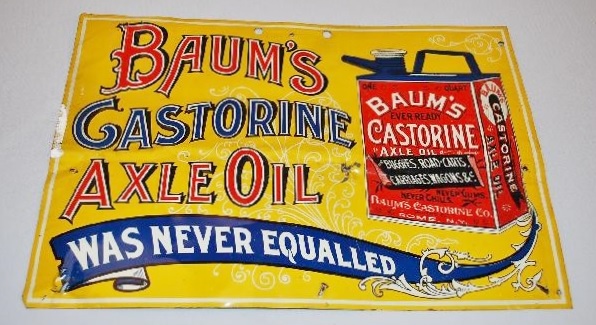
L. Frank Baum and his brother Benjamin in 1883 launched their successful business venture offering lubricants, oils, greases, and “Baum’s Castorine, the great axle oil.”
Although Baum sold the Castorine business in 1900, an Oz historian researched company records in Rome, New York, and found the idea for the Tin Man character began with Baum’s oil.
Learn more in Oil in the Land of Oz.
July 10, 2000 – DOE establishes Home Heating Oil Reserve
President Bill Clinton directed Energy Secretary Bill Richardson to establish the Northeast Home Heating Oil Reserve (NEHHOR) for use during severe winters and other supply emergencies. The reserve of 2 million barrels was expected to last 10 days, the time required for tankers to bring more heating oil from the Gulf of Mexico to New York Harbor.
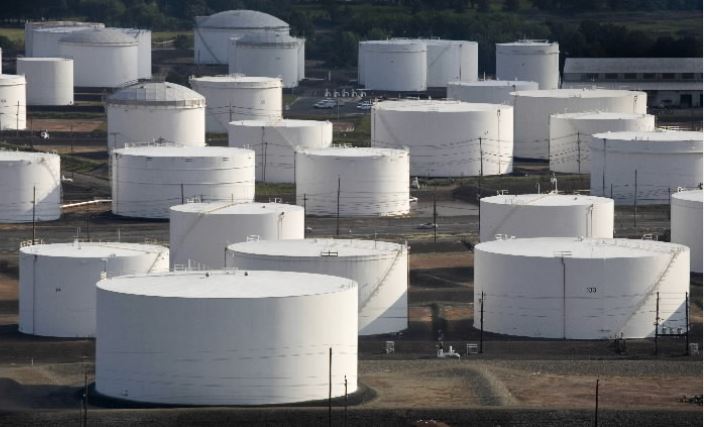
One million barrels of NEHHOR oil are stored in commercial facilities in the Boston area (400,000), the New York Harbor area (300,000), and 300,000 barrels in Groton, Connecticut. Photo courtesy DOE.
Established by the George W. Bush Administration in 2001 and separated from the Strategic Petroleum Reserve, NEHHOR would be reduced in size to 1 million barrels a decade later. The stored fuel was changed from No. 2 heating oil to cleaner burning, low-sulfur diesel held in New England commercial storage facilities.
The first emergency use of NEHHOR took place in 2012, following Hurricane Sandy’s landfall in northeastern states. But with no drawdown since, “the utility and benefits provided by the NEHHOR have been questioned,” according to an August 2022 report by the Congressional Research Service (CRS).
July 11, 2008 – World Oil Price hits Historic High
The price of oil reached a record high of $147.27 a barrel before dropping back to $145.08. Prices on the New York Mercantile Exchange had peaked at $145.29 a barrel eight days earlier. As supply fears subsided, oil prices fell below $37 a barrel by early 2009. Rising global demand beginning in 2011 resulted in prices peaking at $107.95 per barrel in June 2014, before falling more than 50 percent by the end of 2015.
Following Russia’s invasion of Ukraine in February 2022, the price of West Texas Intermediate (WTI) reached $113.66 per barrel before declining to near $100 in mid-2022. The WTI wholesale spot price was $85.19 on July 3, 2024, according to the Energy Information Administration (EIA). The price was $71.76 one year earlier.
July 11, 2013 – Pitch drips After 69 Years
Physicists at Trinity College Dublin photographed a falling drip of pitch — “one of the most anticipated drips in science,” according to the journal Nature.
Set up in 1944, the pitch-drop experiment demonstrated the high viscosity (low fluidity) of pitch, a natural hydrocarbon also known as bitumen or asphalt that appears solid at room temperature but is flowing extremely slowly.
“The Trinity College team has estimated the viscosity of the pitch by monitoring the evolution of this one drop, and puts it in the region of two million times more viscous than honey, or 20 billion times the viscosity of water, ” the magazine noted. Another “Pitch Drop Experiment” that began in 1927 continues today at the University of Queensland in Australia.
Learn more in Asphalt paves the Way.
July 12, 1934 – Emory Clark launches “Clark Super 100” Stations
Two years after paying $14 for a closed, one-pump gas station in Milwaukee, Wisconsin, Emory Clark incorporated what would become the Clark Oil & Refining Corporation.
Clark established a network of simplified filling stations that focused on selling premium gasoline only, Super 100 Premium. His marketing strategy began with eliminating common services like maintenance, engine repair, and tire changing.
Sales reached $21.1 million in 1949, and by 1953, the company operated more than 150 service stations in the Midwest under the brand name Clark Super 100. After purchasing a refinery at Wood River, Illinois, in 1967, Clark began selling high-octane gas from 1,500 stations.
In 1981, the Clark family sold their company holdings, which began with Emory T. Clark’s $14 purchase, to Missouri-based Apex Oil for $483 million.
_______________________
Recommended Reading: The American Highway: The History and Culture of Roads in the United States (2000); Remington and Russell: The Sid Richardson Collection
(1994); Offshore Pioneers: Brown & Root and the History of Offshore Oil and Gas
(2011); Where it all began: The story of the people and places where the oil & gas industry began: West Virginia and southeastern Ohio
(1994); Finding Oz: How L. Frank Baum Discovered the Great American Story
(2009); Empire Oil: The Story of Oil in New York State (1949); Down the Asphalt Path: The Automobile and the American City
(1994); Pump and Circumstance: Glory Days of the Gas Station
(1993);
_______________________
The American Oil & Gas Historical Society (AOGHS) preserves U.S. petroleum history. Please become an AOGHS annual supporter and help maintain this energy education website and expand historical research. For more information, contact bawells@aoghs.org. © 2025 Bruce A. Wells. All rights reserved.

